Although there are many opinions, osteochondrosis of the spine is not considered part of the aging process. The elastic disc between the vertebrae is responsible for bending and lengthening the back, as well as shock absorbers. Eventually, they get tired and no longer give a complete movement. With increasing age, daily stress on the spine and unintentional injuries, including mild ones, can damage the disc in the back and cause osteochondrosis of the lumbar spine.
Who suffers from lower back pain?
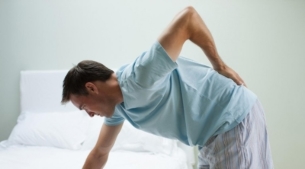
In most cases, the first symptoms of lumbar spine osteochondrosis occur at the age of 11-12 years. The disease clearly appears at the age of sixteen, but the most severe disease and its most common complications range from the age of 15 to 20 years.
Children under the age of 15 rarely have a severe form of osteochondrosis, which is somehow related to the condition of their excellent musculoskeletal system in general, and in particular the spine. In addition, the disease takes time to develop, and on average takes five years.
Fortunately, the disease is easier to treat in children than in adults.
Symptoms
Reflex syndrome
- Cervicalgia- different pain in the neck (pulling, tingling, shooting), feelings of "goosebumps" in the cervical muscles, as well as decreased mobility and flexibility of the neck.
- Lumbagois a sharp, sharp pain in the lumbar region, which may be accompanied by numbness or swelling. Instead of the word "lumbago", the word "lumbodynia" or "lumboischialgia" can be used.
- Thoracalgia- different pains in the chest, shoulder blades and ribs, which are always present or occur during body movements.
Compression syndrome
The occurrence of pain syndrome in lumbar spine osteochondrosis is caused by:
- Compression of root structure (radiculopathy).
- Spinal cord compression (myelopathy).
- Spinal cord injury due to disruption of blood supply.
- Narrow (stenosis) of arteries and veins (vascular-compression myeloischemia).
Methods for detecting disease
Differential Diagnostics
Not every disorder can be diagnosed with a simple laboratory test. Many conditions cause similar symptoms. For example, many infections cause fever, headache, and fatigue.
Many mental disorders are caused by:
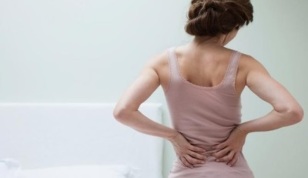
- sadness; anxiety
- ;
- sleep problems.
Differential diagnosis identifies possible disorders that cause symptoms. Usually, this diagnosis is based on several tests. This test can rule out the situation and / or determine if you need additional testing.
Differential diagnosis is used to diagnose physical or mental health problems that cause similar symptoms.
Differential diagnoses are also often used in the field of psychiatry / psychology, where two different diagnoses can be made to a patient with symptoms of several diseases. For example, patients diagnosed with bipolar disorder may also be distinguished from borderline personality disorder given the similarity of symptoms of the two conditions.
Who is more frequently diagnosed?
If earlier the disease was diagnosed in sick people after 45 years, today about 27% of adolescents suffer from osteochondrosis one degree or another.
The spread of this huge disease is understandable - children begin to spend a lot of time sitting, including because of computers and the Internet. Is it bad? Time will tell, but the fact remains - the payoff for an inactive lifestyle is high, and osteochondrosis is far from the worst disease that can occur with such a lifestyle, but it is the most common (after obesity).
How to determine the disease and its stage?
First
Under normal circumstances, the intervertebral disc is constantly regenerating, but the process slows down and diseases such as grade 1 osteochondrosis occur.
There are many reasons for this:
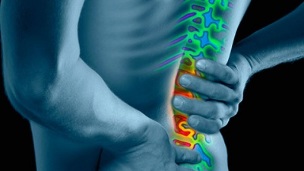
- fat;
- metabolic disorders;
- immunocompromise and so on.
Unfortunately, pain instability at certain stages of the disease is influenced by the fact that many people ignore diagnosis and treatment, and try to cure the pain on their own. For this, ointments and various tinctures are used. But this is the biggest mistake.
Osteochondrosis of the first stage lumbar spine can be easily cured by contacting a good specialist and performing some simple actions.
Grade 1 osteochondrosis is the intervertebral cartilage seal in the lumbar spine. The main symptom at this stage is slight pain when turning or bending. Sometimes symptoms are more acute and short-lived due to sudden movement or significant activity.
Second
Significant symptoms of the disease are pain in the lumbar region, which increases with any movement. The pain may radiate higher to the spine.
With osteochondrosis, pain can radiate to the lower leg.
The second stage of osteochondrosis is characterized by severe pain that manifests itself even in coughs.
Additional symptoms are associated with pinched nerve endings:
- Sensitivity to the lower limbs changes. The main symptoms are: pain, numbness in the feet, high or very low sensitivity of the skin on the lower part of the foot.
- Limited mobility. Someone suffering from osteochondrosis (grade 2) realizes that as the disease progresses, it becomes very difficult to move.
- Persistent increase in fatigue and drowsiness. The patient experiences chronic fatigue, accompanied by irritation. These symptoms are explained by the pain syndrome that always bothers the person.
- Problematic urination and pain in the kidney area.
Third
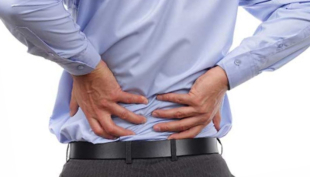
By the time the patient reaches level 3, his posture has changed significantly. In more advanced cases, bone deformation occurs. At this stage of osteochondrosis of the lumbar spine, there is also a deterioration of the general physical and / or mental condition of the patient and profound energy loss.
The third stage is characterized by the appearance of narrowing of the intervertebral foramen with a background of previous changes. An intervertebral disc herniation is formed, the neck and duct muscles are damaged. The patient experiences dizziness, pain in the back of the head.
Fourth
The terminal stage occurs when the intervertebral disc collapses and the disc space is destroyed. At this stage, the disk thinning reaches its maximum level or, worse, disappears completely. Posture imbalances are acute, and movement and flexibility are very limited.
Stage 4 osteochondrosis of the lumbar spine is often characterized by severe pain and higher levels of physical and / or mental deterioration. There is also a permanent loss of growth and energy levels. Level 4 is usually considered irreversible.
Consult a doctor
Which doctor should I contact?
When free treatment methods stop taking analgesic effects, patients begin to ask the question: which doctor treats osteochondrosis? The first person you can contact to treat lumbar spine osteochondria is your local therapist. But in this situation, he acts as a sender, because he will not be able to provide full treatment - this is not his specialization.
Most likely, he will send you to a neurologist. These specialists will do the necessary research and help build the treatment program. The therapist can also refer you to a vertebrologist. This doctor deals directly with spinal diseases.
Scales and tests
Quality of Life Assessment
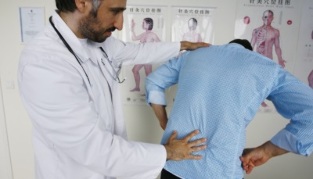
General characteristics such as quality of life are very important for a group of patients with comorbid conditions, as they can affect the effectiveness of treatment. It is very important to compare the results of some studies, economic analysis and to understand the problem as a whole.
Methods for assessing quality of life include:
- Oswestry quality of life questionnaire.
- Roland-Morris questionnaire.
- Stratford scale.
- Quebec Back Pain Scale - Questionnaire on how back pain affects your daily life).
Pain Scales
Pain is an unpleasant sensation and emotional experience associated with tissue damage. The purpose is to enable the body to respond and prevent further tissue damage.
Methods for assessing pain syndrome include:
- Winning Korf Chronic Pain Assessment Scale.
- McGill Pain Questionnaire.
- Verbal pain scale.
Evaluation of treatment outcomes
- McNab Subjective Assessment Scale.
- Patient satisfaction scale.
- Prolo's functional and economic outcome scale.
- Lumbosacral Result Scale.
- Nurik Scale.
Hardware test
X-ray
X-rays provide detailed bone structure in the spine, and are used to relieve back pain caused by:
- Spondylolisthesis.
- Growth.
- Cracks.
Calcium in bone blocks the penetration of X-rays, and bone images are considered a shadow on the film. X-rays provide excellent visibility of all details because bone is made up of calcium. However, discs and nerve roots do not contain calcium, so X-rays do not capture pictures of this structure. Therefore, X-rays cannot be used to diagnose lumbar disc herniation or other causes of pinched nerves.
X-rays should not be taken in pregnant women.
Complications and possible consequences
Complications and possible consequences of lumbar spine osteochondrosis include:
- Radiculopathy is a condition characterized by disease of the nerve roots.
- Muscle weakness - Common symptoms include fever, fatigue, flu-like symptoms, paresthesia, weight loss, and changes in consciousness.
- Neurogenic bladder - a problem with the nerves that control the bladder and urine
- Damage to lower motor neurons.
- The Raynaud phenomenon is a condition in which cramps occur, narrowing of the capillaries of the fingers and toes.
- Pain in the neck, back, legs.
Treatment
Treatment can vary depending on the severity of your symptoms and how much you limit your daily activities.
Here are some treatments that your doctor may prescribe based on your level of pain:
- Non-surgical treatment- not all patients with osteochondrosis require surgical intervention. For mild to moderate pain, treatment is more conservative.
- Spondylodesis- surgical intervention in the treatment of osteochondrosis.
Prevention
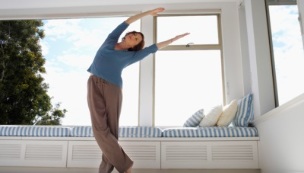
Prevention of lumbar segment osteochondrosis is to eliminate the risk factors that lead to this disease. Elimination of factors is a major preventative measure.
Physical activity is normalized, the back muscles are strengthened, maximum load on the lower back can be prevented, the development of diseases that cause lower back pain can be prevented, all this is prophylaxis for the prevention of lumbar osteochondrosis symptoms.
Simple exercise, lifestyle changes, and good nutrition can help prevent painful and paralyzing symptoms.
If you notice symptoms of lumbar spine osteochondrosis, do not tighten and see a doctor immediately. Diseases detected in time are easier to treat and continue unabated.























